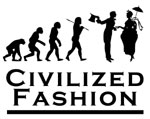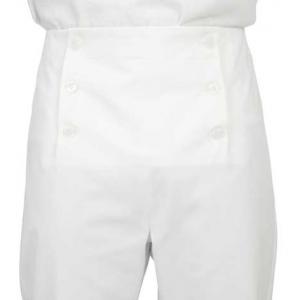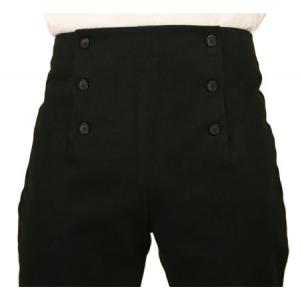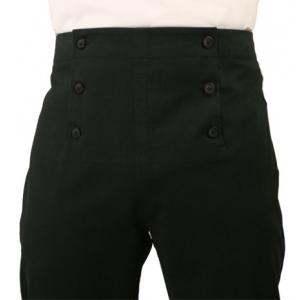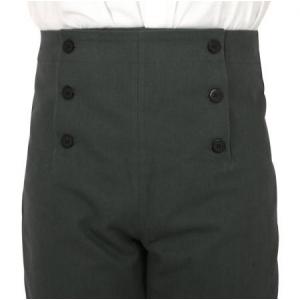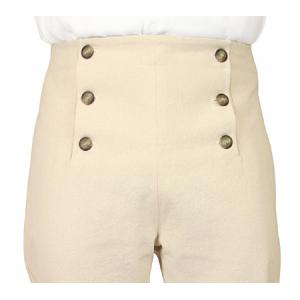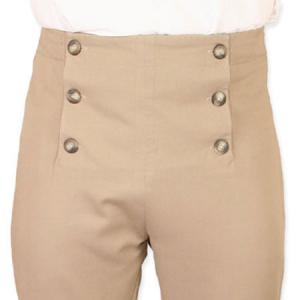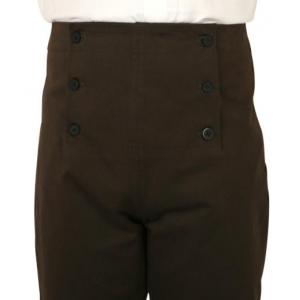Prices and Availability Subject to Change. Please call 800-997-4311 for more Information.
7 results
Frequently Asked Questions About Fall Front Trousers
When did men wear fall front trousers?
Men wore fall front trousers primarily during the late 18th century through the 1830's. The button fly front closure, similar to modern pants, became popular in the 1840s. Fall front pants remained popular in formal and military attire until around the 1850s when they began to be replaced by more modern trouser designs.
What pants should men wear for Bridgerton events?
For Bridgerton events, men should wear fall front trousers or breeches, which are historically accurate for the Regency period portrayed in the show. These high-waisted trousers with the distinctive front flap closure would be paired with a waistcoat, tailcoat, and cravat for an authentic Bridgerton-inspired ensemble.
When did men stop wearing fall front trousers?
Men generally stopped wearing fall front trousers by the mid-19th century. Early adopters switched to button fly front pants in the mid-1840s, and the fall front style was gradually replaced by fly-front trousers with the more familiar button closures we see today.
MORE Q&A




